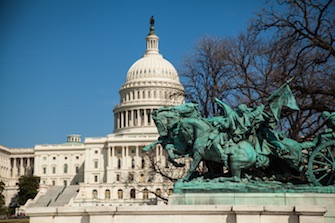Matteo Sabattini on How Licensing Ignites a Virtuous Cycle of Innovation
Innovators that invest in R&D are the driving force behind today’s rapidly evolving technological landscape. However, implementers that rely on – and as a result benefit from – those innovations to sell their own products and services aren’t usually eager to pay those innovators. But by paying the innovators, the implementers are actually helping make sure that the cycle of innovation continues.
Matteo Sabattini, the new President and Chief Licensing Officer of Convida, joins Eli on this episode of the Clause 8 podcast to talk about this important dynamic.
Prior to joining Convida in October, Matteo was the Director of IP Policy for Ericsson in Washington, DC. Convida was formed in 2013 as a joint venture, between Sony and InterDigital, focused on research related to the Internet of Things (IoT) and service layer technologies.
What a licensing success looks like
“To me, that’s the fundamental thing in terms of the licensee/licensor dynamic: I think ultimately we need to get to a point where we are, rather than maybe both happy about the agreement, both equally unhappy in the sense that we figure out a balance that makes sense for the licensor to continue that innovation and for the licensee to really determine the value attributable to the portfolio.”
What a patent represents
“We too often look at patents as pieces of paper when they’re not pieces of paper. They are hard work and sweat by engineers and innovators, and that’s the recognition. So licensing is a means to fuel more of that innovation.”
Reality of efficient licensing vs. patent ‘Cassandras’
“All those arguments that we hear over and over, they make the news, they certainly make for good titles of articles, and they’ve invented some words that stuck, like ‘patent trolls,’ etc. But they’re unfortunately not based on data and not based on reality.
The reality is that the market is actually functioning quite effectively and quite efficiently from any angle you look at. At least in the telecommunication space, there is convergence. Technology is getting into pretty much any vertical, from automotive to smart meters to mechanized fingers. There is an explosion of new use cases, from telemedicine through 5G to asset tracking and so forth. Users are spending less per gigabyte; they have newer phones with more functionalities and so on. So that to me, when I took that role [at Ericsson], was the data. Then, there were the Cassandras that kept telling a gloomy story of tax on innovation, of how we could be further ahead in innovation if we didn’t have to pay patent royalties or if we didn’t have NPEs.”
Highlights:
| 0:11:03 | How shifting value from devices to services and platforms impacts who should license patents |
| 0:17:46 | Licensing fueling further innovation |
| 0:18:56 | Successful licensing means getting to point where both sides are equally unhappy
| 0:19:20 | Importance of communicating the value of R&D for a successful licensing program |
| 0:21:17 | Feedback loop between licensing and prosecution departments is crucial |
| 0:25:41 | Why litigation is not always an indication of bad faith|
| 0:26:30 | Unwilling licensees posing a toll on innovation |
| 0:32:35 | Lessons learned from working at Sisvel |
| 0:34:38 | Avanci and others proving that markets are functioning efficiently because of industry-led, licensing solutions and that new government regulations aren’t necessary |
| 0:38:57 | IEEE’s patent policy change sparking Matteo’s interest in policy|
| 0:40:44 | Taking on policy role at Ericsson at low point of America’s patent system|
| 0:44:03 | Need for coalescing between different pro-patent interest groups |
| 0:48:14 | Impact of issuance and withdrawal of SEP policy statements in the US |
| 0:51:11 | European Commission’s draft SEP proposals to supposedly help SMEs |
| 0:56:22 | Idea to actually help SMEs with licensing of SEPs instead of unworkable regulation |
Eli Mazour
Eli Mazour is a Partner with Harrity & Harrity LLP in Fairfax, Virginia, where he leads the firm’s patent prosecution team. Eli’s practice focuses on helping large technology companies build […see more]







